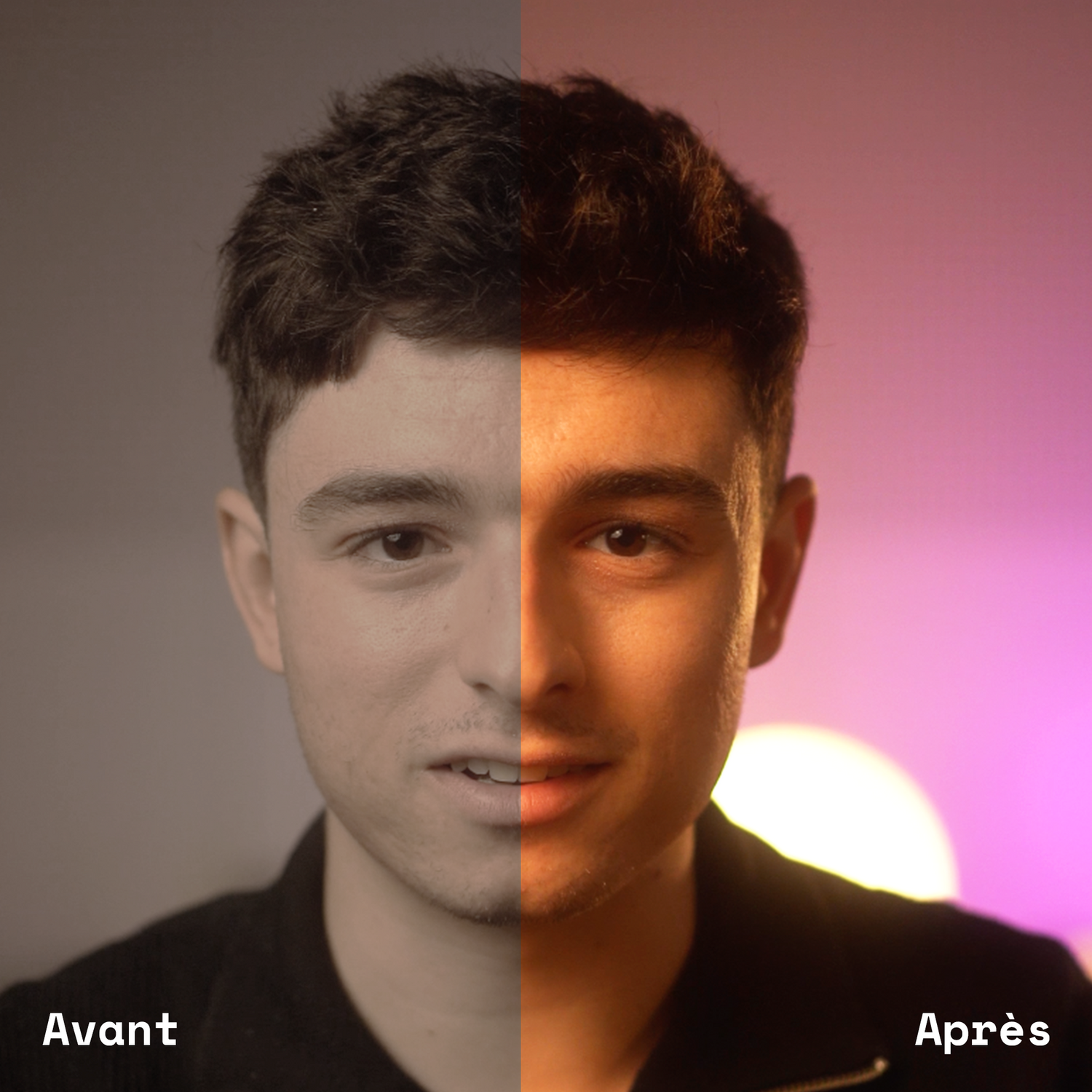Key Light
The first step in creating quality lighting is to select a fairly powerful main light like the handy Amaran 100x or the essential Aputure 300d. This will be your dominant light source. However, too much direct light can be as harmful as it is helpful. The trick here is to soften or modify this light using a diffuser or softbox. This provides soft, even light, which is particularly flattering for portraits and close-ups.
Positioning your main light
Position your main light about 45 degrees from your subject. This positioning creates an ideal balance between highlights and shadows, giving your subject dimension and shape. When choosing your camera angle, you can opt for the lit side (for a brighter, softer image) or the shadow side (for more drama and depth).
The Backlight
A backlight, or contour light, can transform a flat scene into an image with depth and relief. Place a small light behind your subject (3/4) to separate it from the background. Opt for a light that stays within a white range to maintain a natural appearance while adding definition.
Create contrast
Good lighting is not just about brightness, but also contrast. By reducing the exposure of your camera, in our case the excellent Sony a7III equipped with an ND filter, you increase the contrast of your image, which gives more weight to your main subject. This helps focus attention where you want it.
The colour
Don't underestimate the impact of a pop of color in your background. This can add depth and interest to your scene, transforming an ordinary image into a captivating work. Use colored lights to illuminate the background and see how it transforms your image.
Conclusion
Lighting is an art in itself, but with the right techniques and a little practice, you can transform your videos from simple average images into true visual masterclasses. Don't forget that if you need equipment to experiment with these techniques, our site offers a wide range of audiovisual equipment for rental.
We invite you to watch the video below to see in pictures the techniques we talked about!

